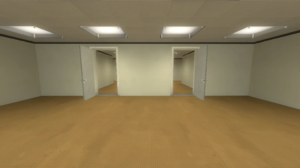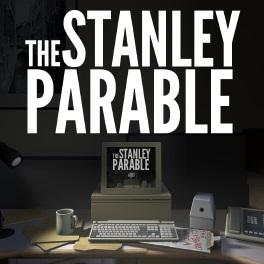For my critical play, I chose to play The Stanley Parable, a story-based walking simulator created by Davey Wreden and William Pugh. The game is available for Windows, macOS, and Linux. I played the game through Steam on my desktop computer. The game is played from a first person perspective, where the player takes on the role of Stanley, an office worker who one day finds that he has stopped receiving tasks to complete and his workplace is abandoned.
The target audience for the game is likely fans of the walking simulator/choose your own adventure genre. The game also appeals to an audience who enjoys dry humor, as the narrator is constantly bombarding the player with sarcastic comments and witty commentary. This game would not be great for someone who likes action/twitch skill games. The humor and commentary in the game would likely be lost on a player who is looking for fast-paced excitement in a video game.
Many of the formal elements of the game are quite simple, leaving the complexity to the many different paths you will follow throughout the game and the outcomes they lead to. In my opinion this was a great design decision, as it really puts the focus on the narrative, as well as making choices and experiencing the consequences. Specifically, the format of the game is single player and the procedures/rules/boundaries are encapsulated within some very simple controls: walking, looking around, and occasionally interacting with something like a button. The uniqueness and appeal of the game comes from the vast number of different outcomes based on the decisions you make.
The main type of fun comes from narrative. The narrative is closely tied with movement throughout the walking simulator as entering certain rooms triggers voice lines from the narrator that often suggest where the player should take Stanley. At a critical point early in the game, the player walks into a room with two open doors, triggering a voice line that narrates “When Stanley came to a room with two open doors, he took the one on the left.” The player interestingly has the choice to take either of the doors, each leading to different narrations and outcomes.

Although I did not play the game enough to experience most of the outcomes, I really enjoyed playing the game, despite the fact that I am usually looking for more action-packed and fast-paced games. Since the game relies so heavily on narrative, I would have enjoyed a little bit more background at the beginning of the game. I do understand that the lack of detail and mundaneness of the setting was very intentional in the design, but it did leave me feeling a bit confused and directionless. Regardless, I would recommend giving this game a try because it was quite unique and definitely got me to laugh a bit.



